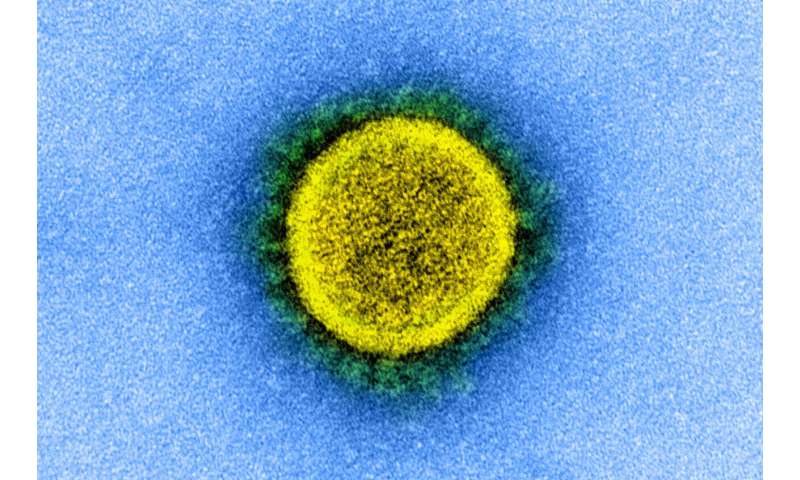
Children with COVID-19 generally experience a mild disease and fatalities are very rare, according to a study of 582 patients from across Europe published today in The Lancet Child & Adolescent Health journal.
The study, which included children and adolescents aged from 3 days up to 18 years old, found that although the majority were admitted to hospital (62%, 363/582), fewer than one in ten patients required treatment in intensive care (8%, 48/582).
The researchers note that their study only involved patients who had sought medical help and been tested for COVID-19, and so milder cases would not have been included. They advise against extrapolating the numbers observed in their study to the wider population. However, they say their findings should be taken into consideration when planning for demand on intensive care services as the pandemic progresses.
Dr. Marc Tebruegge, lead author from the UCL Great Ormond Street Institute of Child Health in London, UK, said: “Our study provides the most comprehensive overview of COVID-19 in children and adolescents to date. We were reassured to observe that the case fatality rate in our cohort was very low and it is likely to be substantially lower still, given that many children with mild disease would not have been brought to medical attention and therefore not included in this study. Overall, the vast majority of children and young people experience only mild disease. Nevertheless, a notable number of children do develop severe disease and require intensive care support, and this should be accounted for when planning and prioritising healthcare resources as the pandemic progresses.”
The study was carried out over a 3.5 week period from 1st to 24th April 2020, during the initial peak of the European COVID-19 pandemic. It involved 82 specialist healthcare institutions across 25 European countries. All of the 582 patients included in the study were confirmed to be infected with the SARS-CoV-2 virus by a PCR test. Only a quarter (25%, 145/582) had pre-existing medical conditions. This contrasts with adult studies where the proportion of patients with co-morbidities is typically far higher, but likely reflects that children have fewer chronic medical problems than adults overall in the general population, the authors say.
The researchers found that the most common symptom reported was fever (65%, 379/582). Around half of the patients had signs of upper respiratory tract infection (54%, 313/582) and a quarter had evidence of pneumonia (25%, 143/582). Gastrointestinal symptoms were reported in around a quarter of the children (22%, 128/582), 40 of whom did not have any respiratory symptoms. Some 92 children, most of whom were tested due to close contact with a known COVID-19 case, had no symptoms at all (16%, 92/582).
The vast majority of patients did not require oxygen or any other support to help them breathe at any stage (87%, 507/582). Only 25 children needed mechanical ventilation (4%, 25/582), but when they did need it, that support was typically required for a prolonged period, often for a week or more (range 1-34 days).
The number of patients receiving antiviral or immunomodulatory therapies were too low to draw conclusions about the efficacy of any of the treatments used. The authors say robust clinical trial data are urgently needed to help doctors make decisions regarding the best treatment strategy for children under their care.
Dr. Florian Götzinger, from Wilhelminenspital in Vienna, Austria, said: “Although COVID-19 affects children less severely than adults overall, our study shows that there are severe cases in all age groups. Those who have pre-existing health issues and children under one month of age were more likely to be admitted to intensive care. Well-designed, randomised controlled studies on antiviral and immunomodulatory drugs in children are needed to enable evidence-based decisions regarding treatment for children with severe COVID-19.”
29 children were found to be infected with one or more additional respiratory viruses at the same time as SARS-CoV-2, such as cold or flu viruses. Of these, 24% required intensive care (7/29) compared with 7% of children with no additional viruses detected, (41/553).
Dr. Begoña Santiago-Garcia, one of the lead authors from University Hospital GregorioMarañón in Madrid, Spain, said: “This is the first study of children with COVID-19 to include data from multiple countries and multiple centres. Of note, we found that children in whom additional viruses were detected in the respiratory tract at the same time as SARS-CoV-2 were more likely to be admitted to intensive care. This could have important implications for the upcoming winter season, when cold and flu infections will be more common.”
Four patients died during the study period, two of whom had pre-existing medical conditions. All of the patients who died were older than 10 years of age. However, the overwhelming majority of patients were alive when the study closed (99%, 578/582) with only 25 (4%) still experiencing symptoms or needing support for their breathing.
Source: Read Full Article
